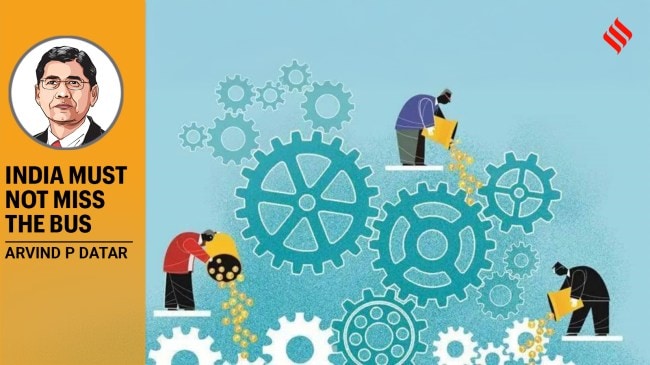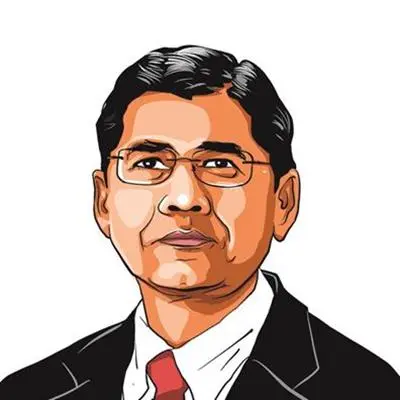Opinion On attracting businesses, India must not miss the bus again
Uncertainties on starting, running and closing businesses need to be removed
 At the start of this century, the recurrent theme was that the 21st century belonged to India and China. Sadly, we missed the bus.
At the start of this century, the recurrent theme was that the 21st century belonged to India and China. Sadly, we missed the bus. In this year’s Independence Day address, Prime Minister Narendra Modi has rightly called for sweeping reforms of the Indian tax and regulatory landscape. Notwithstanding the periodic flattering reports of how India will be the third-largest economy, and of how the world looks up to India, the brutal truth is that it is not an attractive investment destination for multinationals. For Indian companies, it is easier to import almost all products than make them in India. And we have no one to blame but ourselves. At the start of this century, the recurrent theme was that the 21st century belonged to India and China. Sadly, we missed the bus.
In 2001, the GDP figures for China and India were $1.3 trillion and $476 billion. China’s economy was double the size of the Indian economy. A quarter century later, at the end of 2024, China’s GDP stood at $18.74 trillion as against India’s $3.91 trillion; China’s economy is now 4.8 times the size of India. In 2001, China had 11 companies in Fortune Global 500, and India had one-IOC Ltd. In 2024, China had 135 and India had nine. These are statistics that indicate the urgent need to make “Make in India” the nation’s top priority.
The three critical components of ease of doing business (EB) are: (i) Ease of starting a business (ES); (ii) Ease of running a business (EB), and (iii) Ease of closing a business (EC) and can be represented by an equation: EB = ES + ER + EC.
The first component is the time and trouble involved in starting an industry, particularly in the small and medium sectors. At this stage, the bulk of the responsibility is on the states and their regulatory laws. The off-quoted single-window clearance is often a mirage. Even getting a GST registration is problematic, with rent-seeking at every stage. No one has done an actual study of the number of steps involved in setting up different categories of industries, what are the hurdles and actual costs involved, and the time taken. Equally important is to compare the steps, time and costs involved in setting up an industrial unit in China, Vietnam, Malaysia and Thailand with India.
Further, very little is done to attract small and medium investments of values as low as $10 or 20 million. Most state governments focus only on large investors, ignoring the fact that the real growth is at the lower parts of the pyramid.
The second stage requires a careful study of the state and central regulations applicable to running firms and companies on the regulatory front. There are multiple and often meaningless compliances that serve no purpose and only add to paperwork. For a single MSME, there are a mind boggling 57 recurring compliances and 17 approvals/licenses from 18 different authorities only in the area of environment, health and safety. The July 5th-11th issue of The Economist contains a damning indictment of India’s regulations, 75 per cent of which are punishable with imprisonment.
But, the biggest fear of any Indian or foreign business entity is the highly complex and unpredictable direct and indirect tax system. GST continues to be as complex as ever, with vast powers of abruptly freezing accounts, cancelling registration, reopening assessments, and myriad provisions that can bring businesses to a grinding halt. Merely reducing the number of rates or re-enacting the same law in simple language is not the answer. The obsessive focus on checking tax evasion is choking our economic growth. High-pitched tax demands for the last five years, often with little foundation, have created a fear of doing business. Almost every notice is subject to litigation right up to the Supreme Court, often involving huge legal costs. In no other country are businesses exposed to so much uncertainty.
More than half of the businesses may fail and have to close down their operations. In the manufacturing sector, this will involve the disposal of the assets of the land and buildings and plant and machinery. At present, the closure of a business is fraught with severe procedural and legal hurdles. Every business must have a clear exit path.
We are at a fork in the road: Either we choose a completely new path that encourages enterprise or continue with our old methods that have hobbled India’s growth. Peter Drucker famously remarked that there are no underdeveloped countries, there are only badly managed ones. The three components of ease of doing business must be re-examined not by the bureaucracy alone, but through intensive consultations and participation with representatives from industry. A clear plan followed by time-bound execution is the key. India cannot afford to miss the bus again and again.
The writer is Senior Advocate, Supreme Court of India



